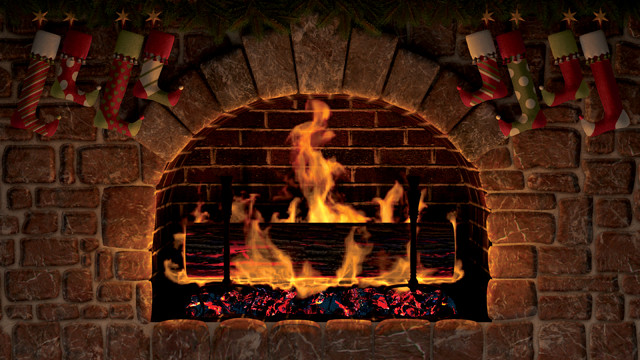
by John Copeland Thursday, November 8, 2018

Ancient Scandinavians celebrated the Feast of Juul (Yule) with a log burned on the hearth to honor Thor, whose job was to bring the sun's warmth, light and life-giving properties back to the people. In Scandinavian customs, the log never burned entirely as it was used as a starter log for the next year's fire. Other cultures also celebrated with a Yule log, but most burned it completely to use the ashes on their fields as fertilizer, wear the ashes as charms or put them under their beds for protection. Credit: ©iStockphoto.com/Ptahi.
This year, the winter solstice falls on Friday, Dec. 21, marking the arrival of winter and the shortest stretch of daylight of the year in the Northern Hemisphere (the situation is reversed in the Southern Hemisphere). The solstice occurs simultaneously around the world when the sun is directly over the Tropic of Capricorn, the line of latitude 23.5 degrees south of the equator. On Dec. 21, winter will officially arrive at 5:23 pm (EST).
Winter inspires both joy and woe. In the Northern Hemisphere, winter — and December in particular — was once both the most dreaded and most hopeful of times. For thousands of years, humans considered the winter solstice the start of the new solar year, and after the longest night, the sun was seen as growing stronger. Thus, the concept of rebirth became strongly associated with the winter solstice.
No one is sure when humans first recognized the astronomical significance of the winter solstice and began celebrating it as a turning point in the year. But our ancestors in many cultures have long been determined to brighten the darkest time of the year. At least 5,000 years of human history have given this season layers of folklore, tradition and celebration. Across time, people have marked the change of seasons with festivals of light and ceremonies of renewal. The Yule log, evergreens, colored glass ornaments and wassail bowls are but a few examples of longstanding traditions intended to brighten the season.
Another such tradition is gathering around central hearths. In the old days, though, people didn’t gather indoors just for good cheer; they did so because nature, so green and welcoming just months before, had become cold, dark and terrifying. The dark months were a time when evil forces were thought to be lurking just out of sight, waiting to claim a victim or two. To wander outside was to invite death.
In many places, it became customary to hold loud, cheery celebrations at this time of year. Our ancestors celebrated with food and drink, sang songs and told stories before enormous fires, imagining that the din would convince lurking evil that there were just too many humans gathered in this one place to take on. Charms worn around the neck also became part of the tradition surrounding this party as a further way of protecting loved ones.
The Yule log, a tradition rooted in ancient Scandinavia as the Feast of Juul, may be one of the oldest winter solstices. The Yule season ran from several weeks before the winter solstice to a couple of weeks after, and a Yule log was burned throughout the solstice night to provide a light in the darkness, symbolizing hope and faith that the sun would return. Outside Scandinavia, the ritual burning of a special log during the winter solstice was also customary as far west as Ireland, as far south as Greece and as far east as Siberia.
From the Middle Ages through today, Christmas has appropriated many ancient winter solstice practices and customs, including the traditions of Yule, and has become the most culturally pervasive festival of all time. Yet, for all the light and joy of Christmas and other solstice holidays, they require the darkness as well. But, once we are past that moment of darkness, we can look forward to brighter skies. As we move into January and February, the days get longer. It speaks well for the human spirit that at winter solstice time, so many people radiate warmth and fellowship on these dimmer days.
© 2008-2021. All rights reserved. Any copying, redistribution or retransmission of any of the contents of this service without the expressed written permission of the American Geosciences Institute is expressly prohibited. Click here for all copyright requests.